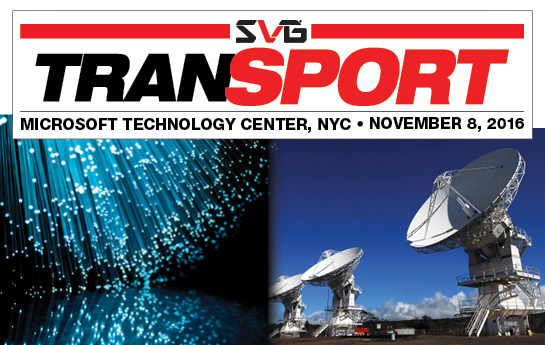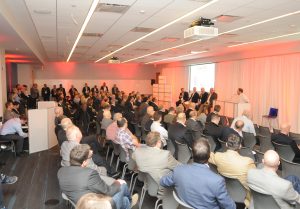Speakers
Glenn Adamo, Ivanhoe Media & Entertainment, President
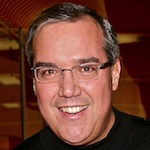
With over thirty-seven years of experience in new media, technology, broadcasting, and entertainment, Glenn Adamo, former VP of media operations at NFL Films & Broadcasting, is now president of Ivanhoe Media & Entertainment, an independent consulting business focused on all aspects of media creation, production, and delivery. Adamo has been in the industry for more than 35 years and was at the NFL since 2003, where he played an integral role in the network’s launch of its production in Culver City, CA, and left his imprint on the creation of developing its Thursday Night Football package. He helped shepherd the network from a fledgling football channel to its current state as a cable sports powerhouse available in nearly 70+ million U.S. homes.
Adamo also spearheaded the development of the league’s flexible scheduling system, which was implemented in 2006 and allows the league to move marquee matchups to NBC’s Sunday Night Football without damaging the Sunday-afternoon offerings on CBS and Fox. Until recently, he oversaw day-to- day operations for the league’s vast media portfolio, including NFL Films, NFL Network, and DirectTV’s NFL Sunday Ticket and remote operations. Adamo began his career with NBC Sports, where he was hired as a news receptionist and production assistant in 1978. In 1982, Adamo was elevated to associate producer, and, in 1984, he received his first producer contract. In 1988, Adamo was promoted to coordinating producer on a variety of shows, including SportsWorld, Wimbledon, French Open tennis, the Olympics, and anthology programming.
Adamo left NBC Sports in 1993, taking on the role of group VP of broadcasting for the NHL. After holding this position from 1978 to 1993, Adamo then moved on to become group VP of broadcasting and scheduling and founder of NHL Productions, NHL Video, and NHL Radio. He was SVP of Axient Communications, a content distribution network, where he was responsible for the production and streaming of the Sydney Olympics to both Quokka and NBCOlympics.com. He worked as VP of broadcasting and community development for the Stanley Cup Champion New Jersey Devils from 2000 through 2003. Adamo was coordinating producer for the Emmy Award winning production of the 2002 Winter Olympic Games in Salt Lake City for NBC Sports, where he was responsible for staffing, production, and creative execution of more than 140 hours of Olympic hockey coverage on CNBC, MSNBC, and NBC networks. A winner of six Sports Emmys, Adamo splits his time between Manalapan, NJ and Naples, FL with his wife, Valerie. A graduate of the University of Connecticut, Adamo completed his education with majors in sports physiology and physical education.
Stephan Beckert, TeleGeography, VP, Strategy

Stephan Beckert is VP of strategy at TeleGeography. He has helped to design and produce many of TeleGeography’s research services and still directs their research on the international voice market. In addition to his research responsibilities, Beckert managed marketing at TeleGeography from 2007-2015 and launched TeleGeography’s WAN Summit conference series in 2013.
Beckert is a frequent speaker at public and private conferences, including PTC, ITW, Capacity, and Carriers World. He served on the Board of Governors for the Pacific Telecommunications Council from 2012-2015 and co-chaired the program committee for the PTC Conference from 2007 to 2011.
Beckert has more than 15 years of telecom market research and consulting experience. Prior to joining TeleGeography, he directed the wireless data practice at The Strategis Group, a telecom research and consulting firm. He holds a B.A. from Trinity University and an M.A. from Johns Hopkins University.
Scott Beers, The Switch, CEO
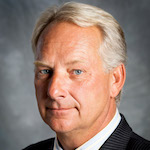
Scott Beers is co-founder of Beers Enterprises, LLC/The Switch, serving as its president and CEO since inception in 1991. Beers began his 35-year career in television broadcasting in systems integration as an intern at Northeastern University. His combination of vision, entrepreneurialism, and creativity continues to foster innovative and revolutionary changes to the video transmission sector, including automated signal routing services and customer control. Beers previously co-founded Beers Associates, Inc. and TX Media. From 1983 to 2001 he served as the CEO of Beers Associates, Inc., a firm that provided both equipment and solutions to the television broadcasting community. From 1994 to 1998 Beers served as President of TX Media, a broadcast transmission services company.
Lionel Bentolila, Aldea Solutions, CEO

Lionel Bentolila is a founder of Aldea Solutions and its CEO since 2001. Aldea is a provider of high quality video services and solutions for the television and media industries.
Prior to Aldea, Bentolila held senior management positions in sales, marketing, and engineering at ABL Canada, a provider of broadcast video compression and networking equipment. His technology career began at Nortel Networks research and development labs.
Bentolila holds an engineering degree from Ecole Centrale de Paris in France and studied at McGill University in Montreal, Canada where he completed his MBA.
Harry Carr, Bay Microsystems, CEO

Harry Carr is a transformational leader with extensive experience as CEO and COO in both divisions of Fortune 100 companies, as well as entrepreneurial-driven private/public technology startup companies. He has raised more than $500M for startup companies and led successful M&A deals and corporate integrations.
Prior to joining Bay Microsystems, Harry served as COO of Compass Networks, CEO and then chairman of Simpler Networks, chairman and CEO of Tellium, divisional COO at Lucent Technologies, COO of Yurie Systems, and defense markets VP for AT&T. Carr has also been an owner of private businesses and an advisor to several early-stage startup companies.
Carr holds a B.S. in finance from Fairfield University and a J.D. from The University of Connecticut School of Law.
Andre Carrington, Level 3 Communications, Senior Solutions Engineer, Strategic Content Division
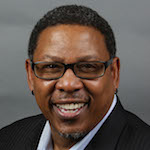
Andre Carrington is responsible for creating custom, complex media solution designs for the largest names in broadcasting, sports, and media entertainment. He has been supporting this customer base for over 12 years and has a robust technical background that encompasses traditional video transport, CDN, IP, security, DWDM, and Ethernet. Carrington has been instrumental in the tailoring of Level 3’s service portfolio for various use cases including design of new to market OTT video acquisition networks, multicast enabled VPNs supporting live video backhaul, and private high capacity long haul DWDM networks. He holds a BSCS from the New York Institute of Technology and lives in upstate NY with his wife and two boys.
Brad Cheney, Fox Sports, VP, Field Operations and Engineering

Brad Cheney manages golf, baseball, and advanced-technology projects for Fox Sports Media Group. He is a leader in new technology approaches, including highly reliable and resilient long-haul fiber-optic live and post production centers, advanced networking workflows in 10/40 Gigabit, and UAS systems.
Cheney manages technical and operational planning for all FSMG golf events, including the 2016 U.S. Open, one of the largest and most technologically advanced productions to date. The 2015 U.S. Open also marked the first legal drone use for live broadcast, which was preceded by the first airing of legal recorded drone footage just after the FAA’s COA 333 exemptions were enacted in 2014.
Cheney is a six-time Emmy winner and previously worked for MLB Network, Late Show with David Letterman, Game Creek Video, and COX Sports. He lives in New Jersey with his wife and two boys.
David Chilson, CBS, Associate Director of Broadcast Distribution Services

David Chilson oversees the CBS Transmission Center and CBS’ Affiliate Engineering. At the network, he has been central to the development, design, and operation of CBS’ global contribution video networks.
Chilson provides both engineering solutions and operations management for facilities that bring feeds in and out of the NY Broadcast Center. In addition, he manages the development and sustaining engineering for the network’s satellite distribution systems and the technical support for CBS’ affiliates.
Prior to CBS, Chilson was with ABC-TV for 14 years in a variety of increasing responsibilities involving engineering, studio tech management, advanced technology, and project management. He holds a BSEE from the University at Buffalo, and an MBA, with specialization in media management, from Fordham.
Ghislain Collette, Haivision, VP, Product Management, Streaming

Ghislain Collette has over 15 years of experience in video networking, working in broadcast, cable distribution, and streaming industries. Prior to Haivision, Collette served as a project engineer at Videotron, designing and coordinating the deployment of multi-million dollar projects and at Miranda Technologies/Miranda Media Networks where he served as product manager for the transport and multimedia products. Collette holds a bachelor degree in electrical engineering from University of Sherbrooke (Canada).
Chris Connolly, NBC Sports Group, Director of Transmission Engineering and Maintenance

Prior to his current role at NBC Sports Group, Chris Connolly served various roles at DirecTV Sports Networks, including director of broadcast engineering, chief engineer for Root Sports Rocky Mountain (formerly FSN Rocky Mountain), and chief architect. Connolly has also previously held key positions at STARZ and the University of Colorado’s BuffVision.
Brandon Costa, SVG, Senior Editor

Brandon Costa is senior editor for the Sports Video Group, where he covers the college sports broadcasting and technology. He also writes on various sports production topics ranging from mobile live production trends to future technologies, including 4K. As program director of the SVG College Sports Summit, Costa assists in the design and execution of the summit’s itinerary.
Prior to his time at SVG, Costa spent five years hosting programs, producing voiceovers, and writing editorial content for MLB Advanced Media in New York City. He has also served as Community Sports Editor at the Asbury Park Press in Neptune, New Jersey. He began his career at WRHU Radio in Hempstead, NY as a sportscaster. A native of Hazlet, NJ, Costa is a graduate of Hofstra University. He currently resides in Jersey City, NJ.
Jason Dachman, SVG, Chief Editor

Jason Dachman oversees all aspects of SVG’s North American editorial operations, including the thrice-weekly SVG Insider newsletter and SVG’s annual print publications. A member of the SVG team since 2009, Dachman also serves as program director for SVG’s Sports Asset Management & Storage (SAMS) Forum, Sports Graphics Forum, and TranSPORT event. Prior to joining SVG, he spent three years covering local sports for The Patriot Ledger in Quincy, MA, and spent two years on the production staff of SiriusXM Satellite Radio’s The Ron & Fez Show. Dachman began his career in the Sports Information Department at Northeastern University in Boston, where he also earned a BA in media communications and cinema studies. A native of Denver, Colorado, Dachman currently resides in Brooklyn, New York.
Thomas Edwards, Fox Networks, VP, Engineering and Development

Thomas Edwards is vice president of engineering and development at Fox Networks Engineering and Operations, where he works on advanced technology development, such as UHD, OTT, and live IP production systems. Before joining Fox in 2007, he was senior manager of interconnection engineering at PBS, and he has had significant experience with streaming media production and delivery at the Internet service provider DIGEX and the IP-over-satellite company Cidera. Edwards has contributed to the NAB Engineering Handbook, the SMPTE Study Group on Media Production System Network Architecture, the SMPTE/EBU/VSF Joint Task Force on Networked Media, VSF TR-03, and chairs the SMPTE 32NF-60 Video over IP Working Group. He holds an M.S. in electrical engineering from the University of Maryland, is a board member of the Streaming Video Alliance, a member of IEEE, and a SMPTE Fellow.
ATSC Board Chairman, Richard Friedel, Fox Networks Engineering & Operations, EVP & GM

Richard Friedel is the executive vice president and general manager for Fox Networks Engineering and Operations. He oversees long-term technology strategy and day-to-day operations for the Fox Network Center in Los Angeles and the Fox Houston Technical Operations Center, home of Fox Sports’ regional networks. He also provides technical support for fourteen regional production centers. Before joining Fox, Friedel served in various positions at Capital Cities/ABC, NBC News, and local television stations.
Friedel is the current chair of the Advanced Television Systems Committee (ATSC), a fellow of the Society of Motion Picture and Television Engineers, and a member of the Audio Engineering Society, Institute of Electrical and Electronics Engineers, Society of Broadcast Engineers, and Society of Cable Television Engineers. In addition to his ATSC responsibilities, he serves as president of the Video Services Forum and is a member of the North American Broadcasters Association Board of Directors.
Friedel was honored by the National Association of Broadcasters with the 2015 NAB Engineering Achievement Award, bestowed to individuals nominated by their peers for significant contributions to advancing the state of the art in broadcast engineering.
Keith Goldberg, Fox Networks Group, VP, Global Operations and Transmission Services

Keith Goldberg is responsible for managing all contribution and distribution transmission for Fox Networks Group (FNG). The engineering and operations division supports the entire Fox Network and cable groups including Fox Entertainment, Fox Sports, Fox International Channels, and the 14 Regional Sports Networks.
Matthew Goldman, Ericsson, SVP Technology, TV & Media
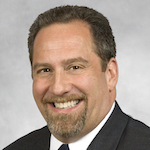
Matthew Goldman is senior vice president technology, TV and media strategy, at Ericsson, where he is focused on video processing and media delivery solutions. He has been actively involved in the development of digital television systems since 1992. He was a prominent participant in the Moving Picture Experts Group where he helped create the MPEG-2 systems and DSM-CC standards, and he continues to be influential in other industry organizations including the Society of Motion Picture and Television Engineers, the Ultra HD Forum, the Advanced Television Systems Committee, the Digital Video Broadcasting project, and the Society of Cable Telecommunications Engineers. Recent activities include ultra HD and high dynamic range technologies. Four of his projects have been later recognized by Technology & Engineering Emmy awards.
Goldman received bachelor (high honors) and master of sciences degrees in electrical engineering from Worcester Polytechnic Institute. He holds six patents related to digital video transport. A SMPTE Fellow, he is also a senior member of the IEEE and an inductee of the Academy of Digital Television Pioneers. Goldman is currently serving as executive vice president on the SMPTE Board of Governors.
Philip Goswitz, AT&T Entertainment Group, SVP, Video, Space, and Communications
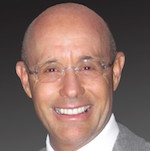
At AT&T, Phillip Goswitz is responsible for video and audio engineering, broadcast technologies, managing the satellite fleet, and planning future capacity needs.
In Goswitz’s three decade-long career with DirecTV and the parent company Hughes Electronics, he’s led the development of DirecTV’s satellite fleet, from the early development of Ku Band satellites for leading digital video services to start the business, to the introduction of spot beam satellites for the delivery of local channels. His work on Ka Band satellites then led to DirecTV leading the world in the deployment of HD services, and now his work with Reverse Band satellites will lead the world into UltraHD 4K services. He has successfully designed, developed, and launched 17 satellites for DirecTV and DirecTV Latin America without a failure. He is also the senior executive in charge of developing and launching 4K UltraHD services at DirecTV.
In 2010, based upon his studies of product design at Stanford University in his Master program, he founded the Design Thinking Ideation team in Engineering at DirecTV. The Design Thinking team uses a very human-centered design approach to drive ideation from direct work with customers in their homes, and diverse collaborative teams from across DirecTV to strengthen brainstorming. This start up now resides with the product development team.
Goswitz joined DirecTV originally after building the Galaxy 3R satellite in 1995. This satellite was the first used to launch Galaxy Latin America, the forerunner to DirecTV Latin America.
Following this, he was one of the first two people working on the LABC (Los Angeles Broadcast Center), and he was responsible for baseband subsystems in the Broadcast Center. Before joining DirecTV in 1996, Goswitz held various engineering and program management positions at Hughes Space and Communications (an operating unit of DirecTV’s former parent company, Hughes Electronics) beginning in 1979 as a satellite manufacturing technician while completing his undergraduate studies. In the next 15 years he worked his way through a satellite manufacturing career working on all phases of the business, from new business and marketing to satellite program management, testing, and operations.
Goswitz holds a Master’s degree in electrical engineering from Stanford University, and a Bachelor of Science degree in engineering from Loyola Marymount University.
David Herfert, MediaLinks, VP of Sales - Americas
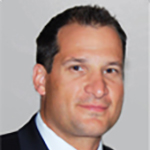
David Herfert is the vice president of sales for the Americas at Media Links, a leading developer and manufacturer of network infrastructure solutions that enable clients to transmit high-quality signals over their existing networks. Herfert brings a balance of sales leadership as well as technical sales and engineering knowledge to the Media Links management team. Herfert has led the Americas sales team through double-digit sales growth in a highly competitive industry with a series of major wins in both the Telco and Broadcast markets. With his articulate sales, negotiation, and presentation skills, Herfert creates strong connections between customer requirements and innovative company strategies to deliver strong partnerships, growth, and profitability.
Herfert‘s career spans over 15 years where he has played an instrumental role enabling companies to achieve sustainable growth. Before joining Media Links, Herfert was vice president of North American sales for Video Products Group where he led the sales team. He significantly broadened VPG’s customer base securing substantial key wins and establishing VPG as a vendor of choice.
Herfert is a graduate of Colorado State University, where he earned his bachelor’s degree and now lives in Tiverton, RI with his wife Kim and four daughters. He has also received a variety of certificates of training for engineering, business, project, and personnel management, among others.
Michelle Munson, Aspera (an IBM Company), CEO and Co-Founder

Michelle Munson is co-inventor of Aspera’s FASP transport technology and is responsible for overseeing the company’s direction in collaboration with co-founder Serban Simu. Munson was a software engineer in research and start-up companies including the IBM Almaden Research center before founding Aspera in 2004. She has dual B.Sc. degrees in electrical engineering and in physics from Kansas State University and was a Goldwater Scholar for achievement in science and mathematics, and later a Fulbright Scholar at Cambridge University where she received a postgraduate diploma in computer science. Munson was also the 2006 KSU College of Engineering Alumni Fellow (the youngest recipient ever), and has received national achievement awards from Glamour Magazine and USA Today. She is a frequent speaker on technologies and trends around big data transport, cloud infrastructure, and mobile.
Tom Sahara, Turner Sports, VP, Operations and Technology

A 28-year veteran of the broadcast industry, Tom Sahara oversees the remote broadcast facilities for Turner Sports IT departments, including day-to-day operations of TBS and TNT live sports productions, and supports the infrastructure of Turner Sports online properties. He also oversees remote operations and technology for NCAA Men’s Basketball on TBS, TNT, and truTV, as well as for events presented on NCAA.com. In addition, Sahara serves as senior liaison with Turner Studios and Network Operations and manages the tape-library archivists. Based in Atlanta, he reports to Matthew Hong, the SVP/GM of sports operations.
With Turner Broadcasting since 1997, Sahara previously served as director of technical operations for the Goodwill Games, supervising all technical functional areas, studio and remote production facilities and crews, vendors, technology providers, transmission and communications, and operations-budget oversight. He also served as the manager of studio engineering for Turner Studios, overseeing technical operations for all live studio productions.
Prior to joining Turner Sports, Sahara was a freelance technical manager for various major television networks covering the NFL, NBA, and the NCAA. He also oversaw technical operations for the 1996, 2000, and 2002 Olympic Games.
Sahara graduated with a bachelor of science degree from the University of Hawaii.
Emory Strilkauskas, ESPN, Principal Engineer, Transport Technologies and Special Projects
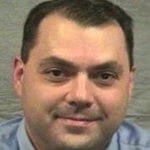
Emory Strilkauskas has been with ESPN since 1989. He has extensive experience in transport operations and engineering. As principle engineer of transport technologies and special projects, he has been focused on exploiting the benefits of digital and fiber technologies. This past year, Strilkauskas helped facilitate transport solutions for full time expansion requirements globally for ESPN, along with special events such as the Tennis Grand Slams, Euro Championships, and the Olympics.
John Ward, AT&T Entertainment Group, SVP, Content Operations

John A. Ward II is senior vice president of content operations for AT&T. He is responsible for sports operations and content management for the DirectTV and U-verse video platforms, as well as media productions at AT&T’s Dallas headquarters.
Ward is also responsible for on-air operations for AT&T’s original entertainment. In his role, Ward oversees the on-air operations for AT&T Entertainment, including Audience Network, the premier destination for compelling original content and critically acclaimed series – only on DirectTV and U-verse.
Ward also oversees the sports operations group at the Los Angeles Broadcast Center (LABC), and has helped transform the LABC from a turn-around facility to a full-fledged production house. His group is responsible for the delivery of more than 100,000 sporting events each year to out-of-market customers.
Previously, Ward held a variety of positions at Fox Sports Productions. As director of production from 1998 to 2005, Ward supervised all studio production for Fox’s NFL, MLB, and NASCAR coverage. He also started two new Fox sports networks, Speed and Fuel TV, and was the Fox presence for NFL Europe in London.
From 1995 to 1998, Ward worked as a production supervisor at Fox where he supervised various aspects of studio production, from post-production schedules to game day on-air operations. He began his sports television career as a broadcast associate at Fox Sports in 1994.
Ward has won 11 Sports Emmys for his work in sports broadcasting. He holds a bachelor’s degree in mass communications from North Carolina State University at Raleigh. Originally from Gates County, North Carolina, Ward is based at AT&T’s corporate offices in El Segundo, CA.
